Search Blog
Your Blog Roll
Signup to get the latest News & Resources
Connect with us
Posted by Peter Hunt in General on September 27th, 2018
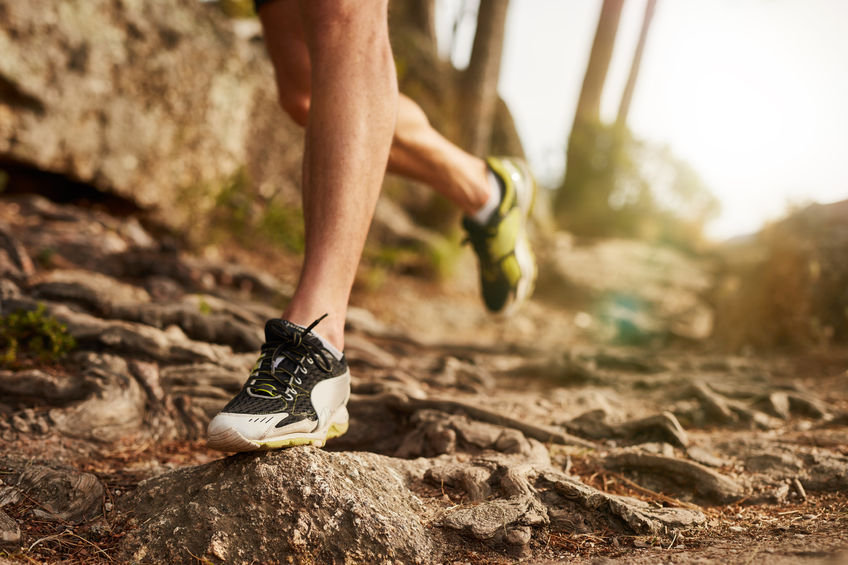
Running is one of the most popular ways to shape up and stay fit, and for obvious reasons. It’s free, no equipment (other than the right shoes!) is required, and you can do it virtually anywhere, any time. Even on holidays.
It is, however, a high impact activity, meaning runners run the risk (pardon the pun!) of injury due to putting excess stress on the joints. But that doesn’t mean you should quit before you begin!
To keep you in the running safety zone, we’ve rounded up six of the most common running injuries we see at Collins Place Physio, plus our top tips on how to prevent them.
The fittingly named runner’s knee is characterised by pain and tenderness/inflammation around and behind the kneecap (patella). It occurs due to poor tracking of the patella, and can flare up due to excessive hill running and poor running technique/weak glutes.
While taping the patella can help in the short term, to prevent runner’s knee from occurring or coming back, you’ll need to see your physiotherapist and work on your hip stability (gluteus medius) and patella alignment.
Another common running injury, achilles tendinopathy is characterised by pain, swelling and tenderness in the achilles where it attaches into the back of the heel. This can be caused by a rapid increase in training volume, poor footwear, instability or flat feet/poor biomechanics.
RICE will help in the short term, and you will need to decrease running. See your physiotherapist for a strengthening program – an isometric loading helps to promote tendon healing and repair.
One of the most commonly cited running injuries, shin splints are characterised by sharp stabbing pain in the front of the legs where the muscles and tendons attach into the shinbone. They are caused by overuse, running sports, and excessive pounding beyond fitness levels – the muscles become inflamed at their attachment into the shin. Shin splints can also lead to stress fractures in the tibia (shin bone) and often seen in people with flat feet, where the muscles of the leg are overworking trying to stabilise the ankle/foot.
This running injury is best treated with rest, NSAIDS, low impact activities, and ankle stability exercises.
Hamstring strains usually occur after explosive exercise, like sprints or hill sprints. Hamstring origin tendinopathy, on the other hand, is a gradual onset and is characterised by soreness in your sit bones at the end of a run or after exercise. Both are usually caused by a weakness/imbalance in the glutes where the upper hamstrings are overworked when extending the hip during the push off phase of running.
RICE, and rest from running is needed to settle the pain. See your physio for an assessment and rehabilitation program to strengthen the glutes and hamstrings.
The plantar fascia is a thick strong band of tissue that runs from the base of the heel to each toe. It is very important as it helps to maintain the arch of the foot. Plantar fasciitis occurs when this fascia is over stretched or overloaded due to repetitive high impact sports or running, jumping etc. It causes a deep ache / burning pain in the sole of your foot first thing in the morning, after prolonged sitting, or after exercise.
Plantar fasciitis is also common in people with flat feet or high arches, middle-aged/older people, or among those wearing unsupportive footwear.
It is best treated with RICE, NSAIDS, specific taping of the foot and rest from running/exercise. Your physiotherapist will give you a stretching and strengthening program, and you may also benefit from an orthotic that may provide you with adequate arch support to return to running.
The ITB is a thick fibrous band that runs from your pelvis to the outside of your knee. ITB Syndrome occurs when the fibrous band becomes inflamed at your knee or hip and causes stabbing pain that comes on with running, especially downhill.
This running injury is usually caused by excessive hill running, running on the same side of the road, weakness in the hips where the femur rotates inwards, or weakness at the ankle joint.
Treatment consists of RICE, NSAIDS, and rest from running, especially hills. Soft tissue release in the hip, quads and hamstrings with help to alleviate symptoms, and your physio with tailor a rehabilitation program for you to correct the underlying muscle weakness.
Posted by Peter Hunt in General on September 4th, 2018
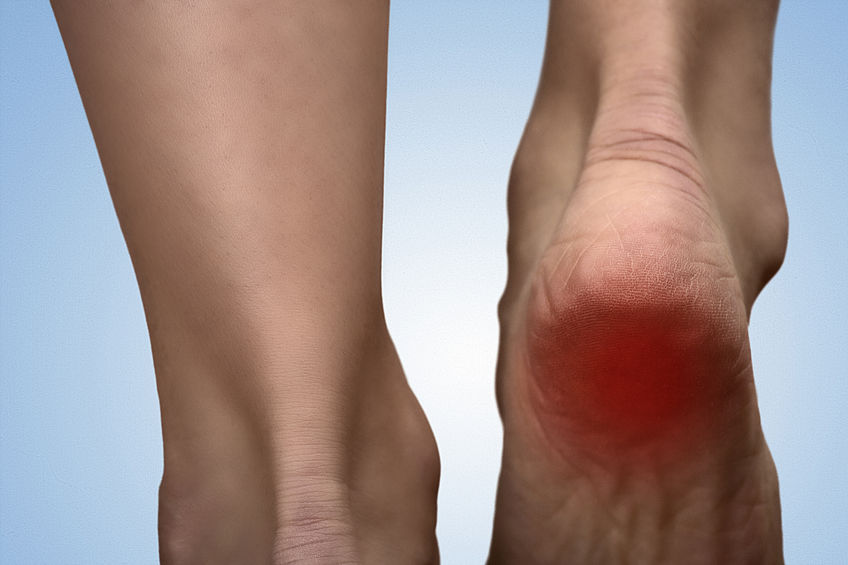
Most of us will experience foot or heel pain from time to time, due to unforgiving footwear, manual, retail or hospitality jobs, or incorrect exercise techniques. If your pain persists, however, you may be suffering from a common complaint called plantar fasciitis. Read on to discover all the warning signs and causes, and determine if a trip to the physio is in order.
Plantar fasciitis is inflammation of the plantar fascia – a band of connective tissue that spans the sole of your foot, from the ball to your heel. As opposed to generalised foot pain, plantar fasciitis pain is mainly felt under the heel and can be quite sharp. However, you may also feel an ache throughout the sole of your foot. The condition is often worse during the first few steps after waking up, or after prolonged periods of sitting or standing. It can improve during activity or exercise, only to flare up afterwards.
People who are quite active but have tight calves or lower leg muscles, or a stiff ankle from previous ankle sprains are more prone to plantar fasciitis. It is also more common in the elderly, those who are overweight, during pregnancy, or in those with arthritis or flat or high arches. People who spend a lot of time on their feet in inappropriate footwear may experience chronic heel pain. Poor biomechanics and sporting techniques can also exacerbate plantar fasciitis.
Prevention is always better than a cure, and you can definitely take steps to prevent plantar fasciitis from keeping you off your feet. This starts with by identifying your risk factors, such as tight muscles, poor biomechanics, or poor footwear, and taking active measures to address these.
Once it occurs, plantar fasciitis can be relieved with ice, anti-inflammatories, taping, and sometimes cortisone injections. Your physio will be able to treat the condition with soft tissue massage, and educate you on beneficial stretches for any muscle tightness. He or she can provide you with tools to improve your biomechanics, and strengthen your foot, core and lower limb muscles. A physio or exercise physiologist can assist you to improve your sporting technique, as good form may reduce further flare ups.
For feet to function at their best, appropriate footwear is essential. And, if you require extra arch support or heel cushioning, you may need to see a physio or podiatrist to have orthotics made.
Posted by Peter Hunt in General on August 20th, 2018
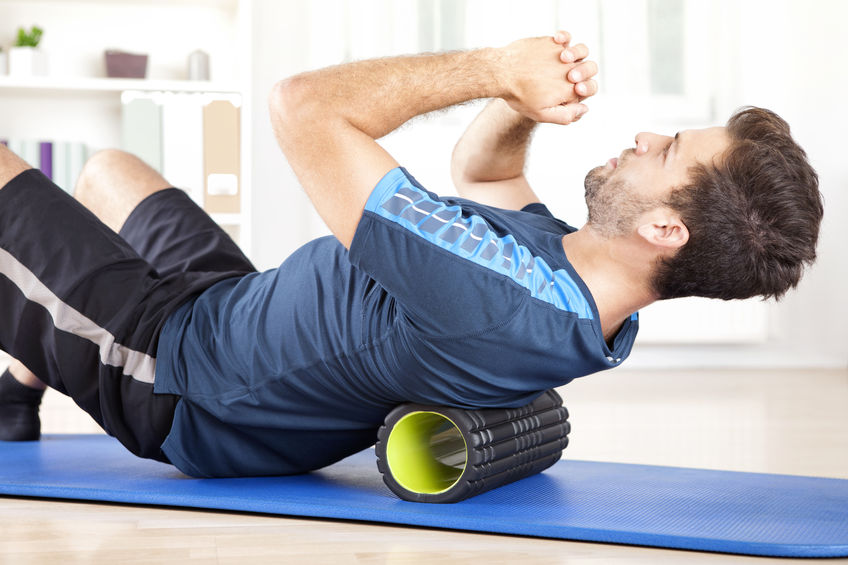
Not just the realm of professional athletes, foam rolling has hit the mainstream as an easy, affordable method of myofascial release. But do you really need ANOTHER piece of fitness equipment to potentially gather dust? When it comes to the foam roller, the answer is a resounding yes! Here are six reasons you should consider rolling it out after your next workout. Or even just a long day stuck at your computer.
While it would be nice to have a massage after every tough workout or deadline day, most of our budgets don’t allow such luxury. Thankfully, you can achieve many of the same benefits at home with your trusty foam roller. Using a foam roller and your bodyweight, you can break up knots, relax and release muscles, and boost circulation, blood and nutrient flow.
There’s a reason athletes love to foam roll: it helps to speed up the recovery process. Rolling over the areas you have just used helps to relieve post-workout pains by increasing blood flow to the area, which improves circulation – pumping lactic acid out and getting fresh blood and oxygen into the area.
By reducing muscle tightness, you’ll enjoy greater flexibility and mobility. Not just for recovery, foam rolling as part of your warm up can improve your range of motion, allowing you to reap more benefits from your training session. So, give those glutes a good going over before your sumo squats.
Increase of temperature through the friction of foam rolling causes a ‘warming up’ effect on the muscles and gets blood flowing, loosening them up, increasing your range of motion and helping you move and perform better during exercise, thus reducing the chance of an injury.
With faster recovery time, increased mobility and fewer injuries, you’ll be able to work out more often. Instead of wasting days sidelined due to unnecessary aches and pains.
Even if the most strenuous thing you did all day was send a firmly worded email, foam rolling is a great habit to embrace as you watch the evening news. Lying along the length of the roller, spread your arms out away from the body and let gravity do its work – lengthening and relaxing your tight, shortened pectoral muscles.
Proper foam rolling technique is important, so ask your physio for directions before getting started. Don’t foam roll directly over an acute injury or where there is acute / intense pain. Avoid putting too much pressure over one particular area over a short period of time, which can result in acute pain. And, if ever unsure, ask your physio!
Image Source
Posted by Peter Hunt in General on August 3rd, 2018
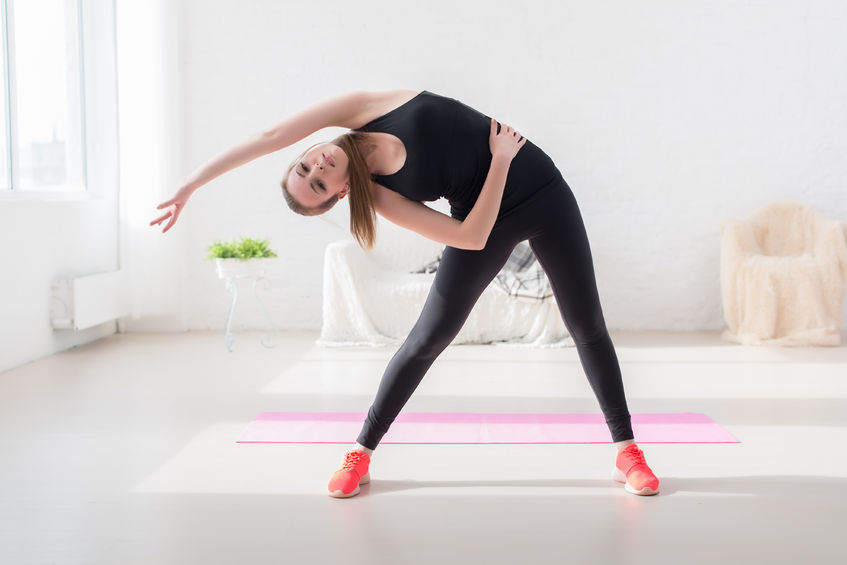
You’ve probably heard the words flexibility and mobility used interchangeably, but – while both are important to be limber and agile – they are actually quite different. Whether you want to touch your toes, do the splits, or leap out of bed without any aches and pains, here is everything you need to know about mobility versus flexibility. And how you can improve yours.
While mobility refers to how a joint moves, flexibility is the ability of a muscle to lengthen through its full range of motion. Mobility is an umbrella term for the many elements that contribute to a joint’s movement with full range of motion, including restricted muscle tissue, joints, the joint capsules, motor control, AND your soft tissue. Therefore, flexibility is part of a joint’s mobility.
Flexibility will benefit your joints by helping you achieve good mobility. Keeping joints mobile helps to keep them healthy, decreases pain and reduces the risk of injury. Flexibility and mobility allow you to place your body in the safest, most advantageous position for utilising your strength. If you have strength but no mobility, you are working against the pull of your muscles and moving less efficiently through life.
If you have poor mobility, you are more susceptible to injury. Take a deadlift for example. If you struggle to comfortably reach down to the bar while maintaining good form, you will overload and injure your lower back when you are lifting through that range.
If you have poor flexibility, those muscles will fatigue faster and run the risk of tearing during sport or exercise.
Mobility plays a huge role in improving movement quality and strength. You will be stronger and safer lifting a weight through a range of motion if your body can comfortably achieve that position. You’ll enjoy better athletic performance as your body will be able to perform for longer periods as your muscles can function optimally and do not have to compensate for poor mechanics. Increased flexibility will also improve your sporting performance. You’ll experience increased joint movement, thus decreasing load and risk of injury. With your muscles functioning optimally, you’ll be less likely to fatigue.
Static stretching is good for flexibility as it isolates certain tight muscle groups. Yoga is great to work on general mobility as it will stretch, strengthen and mobilise your joints. Everyone should incorporate general mobility exercises into their warm up/down routine, eg through deep squats, hip hinging, thoracic extension and rotation.
Other easy ways to improve both include keeping active, foam rolling, massage etc. Foam rolling, spiky balls, and trigger pointing massage tools are all useful aides that will help with soft tissue tightness, but they need to be used in conjunction with general mobility exercises for easier, pain-free movement.
Image Source
Posted by Peter Hunt in General on July 26th, 2018
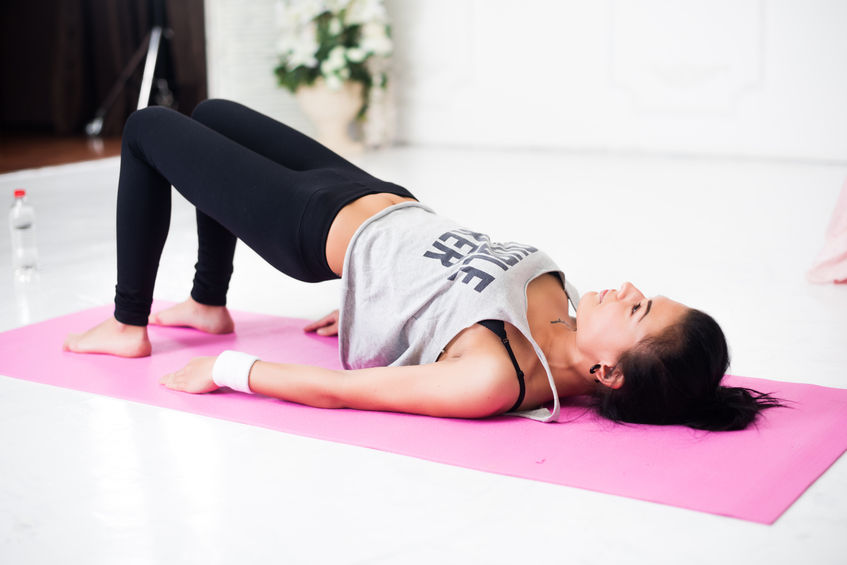
Do you regularly suffer from headaches, back or neck pain or injury? Sounds like it’s time you took better care of your spine! Made up of vertebra to provide structure to your body, spinal discs between the vertebrae for shock absorption, and ligaments and muscles connecting these vertebrae to form the spinal column (which houses the spinal cord), the spine helps keeps you upright, and moving, twisting and bending freely.
To keep you safe and pain-free, here are 12 ways to show your spine some TLC. Try them today.
You’ve probably got the memo that sitting is akin to smoking when it comes to the negative impacts on your health. One of the many reasons a sedentary, desk-bound lifestyle is problematic is that sitting exerts far greater pressure on the spine than standing – 40% in fact! Over time, this can lead to back pain due to the increase in concentration of pressure through your intervertebral discs.
These discs are made out of an outer fibrous ring, surrounding a gel-like centre, the nucleus pulposus. The nucleus helps to distribute pressure evenly across the disc, preventing the concentration of stress onto one particular area. The discs are also meant to expand and contract as you move, which allows them to absorb blood and nutrients.
When you sit, the discs are compressed and can lose flexibility over time, which can also increase your risk of a disc herniation. Sitting for long periods also puts extra stress on muscles and ligaments, which can cause pain. Which leads into our next point…
Office worker, manual labourer, weight lifter… EVERYONE will benefit from a little more stretching in their day to day. Stretching increases flexibility of your muscles and improves the range of motion of your joints. This reduces the stress on your joints and enables your muscles to work most efficiently.
To support your spine, it’s very important to strengthen the core muscles of your abdomen and lower back. Yoga and pilates are two core-centric workouts that will do wonders for the stabilising muscles of your mid-section. They also promote better posture, which benefits the entire body.
To alleviate pressure from the spine as you sleep, you want a supportive and comfortable mattress that allows good spinal alignment. So, if your mattress is starting to sag, it might be time to cough up for a new one.
Without adequate hydration, the cushioning ability of the disks between your vertebrae is reduced. This can lead to back pain, reduced mobility and, in extreme case, spinal injury. So, drink up!
Ideally, your workplace will have sit-stand desks, which support good spinal health. If not, a good ergonomic set up is important for all those hours spent sitting. For starters, ensure your feet are flat on the ground, at least half of your forearms are supported on the desk when your elbows are at 90 degrees, and you’re looking directly at the top half or third of your screen.
It might seem vain, but positioning yourself near a mirror at the gym is an important safety measure. It will provide you a visual to ensure you have the correct, back-supporting form when lifting weights. And never sacrifice your form for the sake of more reps!
If you suffer from chronic pain, want to speed up recovery after a training, or just want to deeply relax, free from the constraints of gravity, you need to try floating. Floatation therapy, bobbing around in an Epsom salt solution in a stimuli-free pod, has countless purported benefits. As well as relieving your back pain, you might enjoy better sleep or even ace that sodoku.
We don’t like to be spoil sports, and we’ll never tell you to toss the heels. However, vertiginous footwear can overload the muscles of the lumbar spine, leading to muscle fatigue and back pain. So, try to limit your wear.
If you lug your life around with you, consider a more minimalist approach. Swap that weighty tome for a kindle, empty all your coins into a jar, and consider a more spine-friendly back pack.
As well as having countless benefits for your heart, waistline and mind, an active lifestyle is essential for a healthy, happy spine. For a balanced regime, combine cardio, stretching and resistance work.
Massage is not just an indulgence. It helps to improve circulation, reduce muscle tightness, relieve stress, speed up healing, and improve your range of motion. All of which is good news for your overworked spine!
Image Source
Posted by Peter Hunt in General on July 17th, 2018

Hunchback, high rounded shoulders, forward head posture – these are three of the key signs you might have a condition known as Upper Crossed Syndrome. Often a result of excessive time spent scrolling or typing, UCS strikes when the muscles behind the neck and shoulders become overactive and strained, while the chest muscles become short and tight.
Unfortunately, it’s an all too common condition we see at the clinic. However, with the right treatment and exercises, you can improve your posture and alleviate your symptoms. Read on for everything you need to know about tackling Upper Crossed Syndrome.
The muscular imbalance (shortening of chest muscles, weakening of upper back and neck muscles) affects the position of the head, shoulder girdle and spine, and can result in pain, headaches, and reduced range of motion. Presentation includes:
Activities that involve repetition of poor posture are largely to blame. UCS is most common in those who sit at a desk for prolonged periods, such as office workers and students. Excessive phone, tablet and laptop usage can trigger the condition, but it can also be caused by driving, reading, or cycling.
Those with Upper Crossed Syndrome may experience the following:
If left untreated, the above symptoms can become chronic which may lead to long term pain and discomfort.
Since many of us do not have a choice when it comes to hours spent desk-bound, an ergonomic workstation is incredibly important. Schedule regular breaks – get up and move around or stretch every half an hour or so. Exercise to improve strength, flexibility and range of motion. And if it’s sports-related, work on improving your technique.
Some treatments include:
Upper trapezius stretch
Sitting onto right hand, roll right shoulder back. Place left hand on top of head and gently pull your left ear to your left shoulder until you feel a stretch from the top of your neck to the tip of your shoulder. Hold for 30 seconds. Swap sides
Levator Scapulae Stretch
Sitting onto right hand. Roll right shoulder back. Look down 45deg / bring chin towards left underarm. Place left hand on top of head and gently add to the stretch. Hold for 30 seconds. Swap sides.
General sitting stretches
Hands behind head. Bring elbows as far back as you can until you feel a stretch in your chest. At the same time, arch over the back of your chair.
Interlace your fingers. Palms towards the ceiling. Stretch your arms as far towards the ceiling as you can then slowly bring your arms backwards until you feel a stretch down the sides of your arms and trunk.
To get on top of any postural issues you’re experiencing, call us on (03) 9650 2220 today.
Posted by Peter Hunt in General on June 20th, 2018

The slopes are open and ski season’s underway. Which, as physios, unfortunately means we’ll see an influx of patients hobbled by those all-too-common knee injuries. Because, while skiing and snowboarding are lots of fun, they’re also relatively risky sports.
To help you ski safely, our resident snow bunny Conor has put together this guide to the most common snow-related injuries, and some easy tips to avoid them…
Skiing has a reputation for being a risky sport with high incidence of injury. Studies have shown the skiing injury rate to be 3 injuries per 1000 skiing days. Of this, the bulk of injuries were to the lower extremity (42%), most of which were to the knee. Upper extremity injuries accounted for 34%, head 15% and spine 6%.
Knee injuries account for 1/3 of all injuries in skiing. Most skiing injuries (about 75%) occur either by falling down or loss of control during a jump, with only between 3%-8% occurring by collision with other skiers. The medial collateral ligament (MCL), found on the inner side of the knee joint, is the most commonly injured due to the sudden twisting motion encountered during falls. Injuries to the meniscus (knee cartilage) and the anterior and posterior cruciate ligaments (ACL and PCL) are also very common. This pair of ligaments connects the femur (thigh bone) to the tibia (shin bone), and are integral in knee stability when twisting and turning.
A good lower limb stability program can minimise the stress placed on the knees during jumps and falls and reduce the risk of injury. It is also very important to regularly check your bindings so that they release during a fall. This is one of the main causes for knee injuries in skiing.
Most knee injuries can be treated conservatively, but in the case of a complete ACL rupture, surgical intervention is usually required to restore rotatory stability to the knee.
Head and neck injuries are common during falls. This can result in concussion, whiplash and neck sprains. Any blow to the head needs to be carefully monitored and assessed by a doctor. Helmets should be worn at all times to protect the head from serious injury.
Skiers thumb is an acute injury that often happens when falling with your hand in the ski pole strap. Your thumb can get caught and pulled away from the hand, which can cause a ligament tear. This can result in difficulty with grasping. Treatment is often with a cast, splint or taping, but surgery may be required.
The best way to prevent injuries is by doing a proper strength and conditioning program before hitting the slopes. When there, a good warm up should be performed each day as cold muscles are more likely to sustain an injury. Beginners should also get lessons to help them learn good technique and learn how to fall properly. And, no matter how experienced, a helmet should be worn at all times.
Posted by Peter Hunt in General on June 6th, 2018
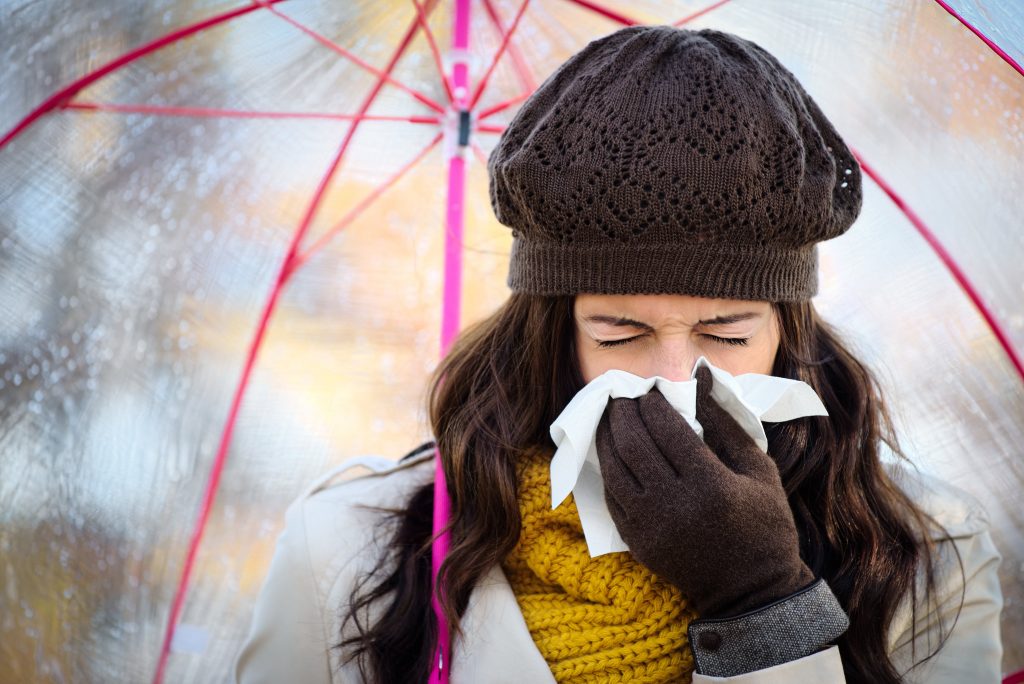
Now that winter has officially arrived, we’re well in the midst of cold and flu season. From coughing colleagues to sneezing kids, it can be hard to escape its icy grip and stay in fighting form. But it is possible.
To make this cold season your healthiest ever, start by embracing these surprisingly simple winter wellness tips. Because, with 85 days until spring comes around, there’s still a long way to go!
Last year’s flu season was one of Australia’s worst in years, so experts are stressing the importance of protecting yourself with the flu jab this winter. Contrary to belief, the vaccination will not make you sick as it does not contain the live virus. You can have your flu injection at the pharmacy or your regular GP, and it is free for pregnant and older patients, and those considered more at risk.
Winter is not the time to turn into a couch potato, as tempting as it can be. Regular exercise will not only keep the comfort eating kgs under control, it will help you from succumbing to the winter blues, and support healthy immune function. One study out of the University of Wisconsin found there were significantly less sick days due to acute respiratory infection in those who engaged in moderate intensity exercise over an 8-week period than in a non-exercise control group. So, don’t let cold weather put an end to your workouts!
It might seem indulgent, but regular massage could save you splashing out on cold and flu tablets. Not only does massage relieve tension, knots and muscle aches, it is known to help boost your immune system. So, book a regular rub down to keep the sniffles at bay!
Those cosy mornings make it harder to leap out of bed, so, if you can avoid it, don’t! Various studies show insufficient sleep suppresses the immune system, not to mention the impacts on cognitive function. But exactly how much shut eye should you be getting?
According to recent recommendations from the National Sleep Foundation (US), 7 to 9 hours sleep is advised for adults aged 26 to 64. So, snuggle in, switch off that tech at least an hour before bed, and try your best to meet your daily requirement.
While you should obviously wash your hands year-round – after using the bathroom, catching public transport, before eating – to avoid the spread of illness-causing bacteria during winter, you should be even more vigilant. And for convenience when you’re out and about or travelling, consider keeping a hand sanitiser in your bag.
Green juices may be a great way to meet your vitamin and nutrient requirements, but they’re not as appealing in the cooler months. Hearty vegetable soups, especially home-made, are a warming replacement to nourish the body in winter. Pack yours with a rainbow of vegetables and add cold-fighting ingredients like garlic, ginger and turmeric. Yum!
Posted by Peter Hunt in General on May 11th, 2018
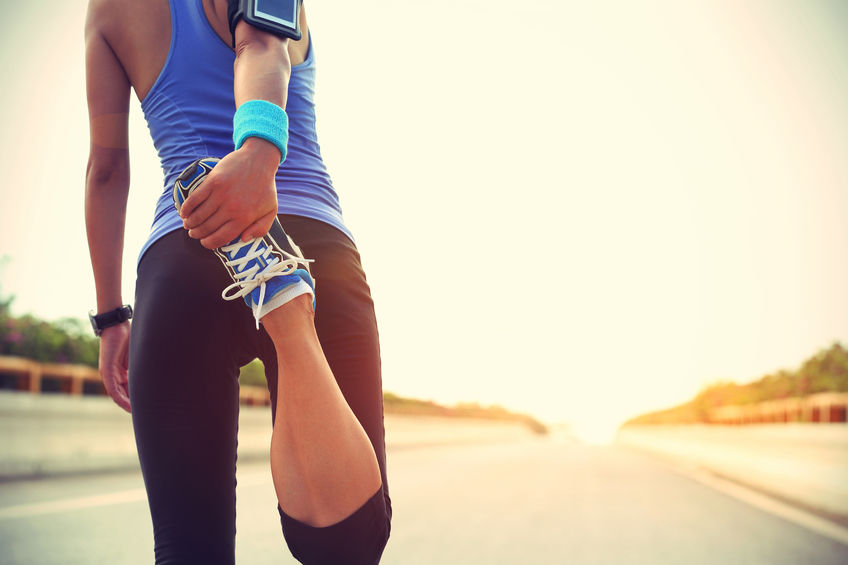
It’s just five months out from the Melbourne Marathon. This may seem daunting, but regardless of whether you’re a first timer* or an out-of-shape seasoned pro, you CAN get there in time. Here are some helpful hints from our team to help you on your way.
We advise being fitted in a specialist store where expert gait analysis can help guide you on the best shoe for your foot type and running gait. This will show you how much your foot pronates (turns in) when you run and give you an idea of how much arch support you need in your running shoes.
Comfort is king for runners, so ensure there is no friction, rubbing or pressure points. In terms of length, there should be one thumb-space between the longest toe and end of the shoe. And remember, if they don’t feel 100% comfortable in the store, they’re not going to feel too flash on an 18k training run!
Pro-tip: It’s definitely worth investing in a second pair of runners and alternating if you’ll be training on consecutive days.
Running can be a solitary sport, but pairing up with a buddy or joining a running group will trigger your competitive spirit. And motivate you to turn up to training, even on those chilly winter mornings. Having a running buddy, or crew, by your side also makes those post-marathon celebrations even sweeter!
To optimise your race time and make sure you make it to the finish line in one piece, see your Physiotherapist for a thorough biomechanical screening. At Collins Place Physio, we use the Functional Movement Screen (FMS) and Y Balance to identify any asymmetries or inefficient movement patterns that increase the likelihood of injury. This allows our physios to tailor a corrective exercise program that addresses your weakest areas.
Training for a marathon, you’ll be running at least three to five times a week, gradually increasing your cumulative kms. One of these sessions should be your weekly long run. But that doesn’t mean you should only focus on distance. To avoid boredom and increase speed as well as endurance, it’s a good idea to incorporate sprint training into your schedule.
Your energy requirements will change as you up your training sessions. Now is a good time to speak to a sports nutritionist to see how the right food can fuel your performance. In the lead up, and especially in the 24 hours before.
It might seem like you should be spending every spare minute pounding the pavement, and give up all other workouts while training for a marathon. Not true. To run a marathon, you need a good level of fitness, strength, mobility, endurance and sheer grit, best obtained with a varied training plan.
Off-leg training days (bike/rower/Elliptical trainer) should be part of your marathon prep, as well as resistance/weight training, and working on good pelvic stability/gluteal and core strength.
It’s a good idea to book in a few shorter distance races – 10kms, half marathon etc – in the lead up to get you physically and mentally prepared. Especially if you’re a first timer!
We all know the saying ‘slow and steady wins the race’. This definitely applies to safely building up to a marathon. According to our Director, Pete: “I’m forever having to tell my patients that to get to the finish line they first have to get to the start line and if they over train/train incorrectly they won’t even get to start the race.” So, make sure to be patient and increase your training loads gradually.
Each year, we see many people come into CPP a month or two before the Melbourne Marathon with overuse injuries, such as shin splints, lower limb stress fractures, and tendinoses. Too many people forget that recovery is an important part of training!
To ace your race, make sure you allow enough recovery time between training runs. As a rule of thumb, we recommend a less experienced runner should aim to have an off-legs day between each run. Yoga is a great recovery day workout as it helps improve flexibility and hones that mind-body connection.
Running can be tough on the body, so try to book in regular remedial massage sessions to reduce any muscle tightness. Massage also boosts circulation which helps to improve your range of motion and can reduce your risk of injury.
During your marathon training, a foam roller will be your best bud. Rolling, ideally when muscles are still warm, will relieve tightness and enhance recovery. Recovery compression tights can also help alleviate soreness after your longer runs.
Happy running!
*CPP tip: If you’ve done very little running before, 5 months may be too ambitious to train safely for a full marathon. Discuss your plans with your health care team, and perhaps consider signing up for the 10k or half, and work up to next year’s event.
Posted by Peter Hunt in General on May 9th, 2018
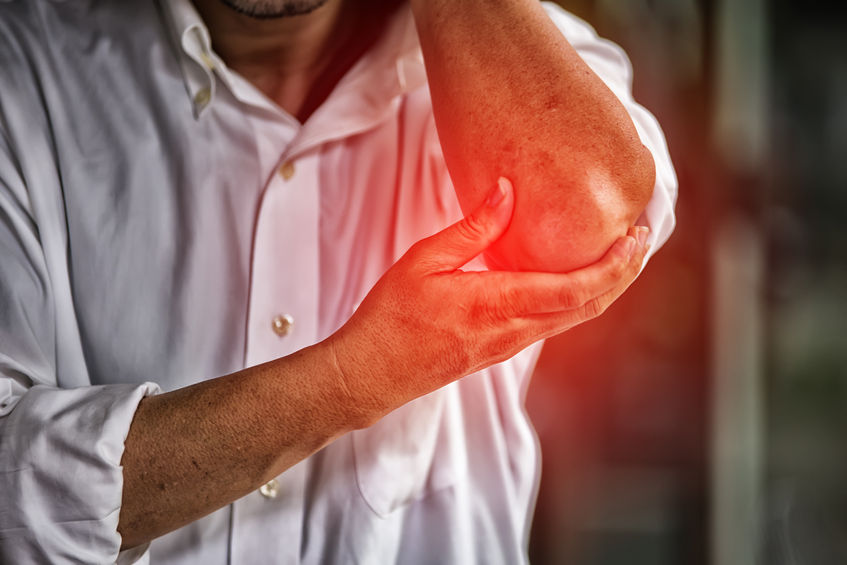
If you think tennis elbow is just a sports injury, think again. Desk jockeys, chefs and painters are just as likely to suffer the painful condition! Here, our Physiotherapist Jane Lau reveals everything you need to know to give tennis elbow the heave-ho. And get back in the game.
Tennis elbow, or lateral epicondylitis to use its technical name, refers to pain in the outer aspect of the elbow caused by overuse. It occurs when the tendons of the forearm muscle that attach to the elbow are unable to handle the load they are bearing. The tendons become inflamed, leading to tears and degenerative changes.
Despite the name, any repetitive activity can cause tennis elbow: computer work, painting, cooking, gardening, excessive gripping, incorrect lifting technique in the gym etc. The problem itself usually stems from poor technique, reduced strength or endurance, or because the tendons are put under too much strain.
Tightness in the outer elbow, aches, pain, weakness, and sometimes pins and needles or numbness.
If it’s tennis, or any other sport, that’s causing your elbow issues, it’s important to work on improving your technique, endurance and/or strength. Regardless of the cause, make sure you’re getting sufficient rest and having regular breaks from the repetitive activity. Regular massage is also useful.
Rest, ice, anti-inflammatories, and soft tissue massage will help ease discomfort. Exercises and stretches, provided by a physio, are also key, to increase strength and endurance. Not just of the local area but also the shoulder, neck, shoulder blades, thoracic etc. Dry needling is also beneficial, and you will also need to avoiding aggravating factors for a period of time.
In the worst-case scenario, your health professional may recommend cortisone injections. However, at Collins Place Physio we avoid recommending these invasive measures unless absolutely necessary. Even if you go down the path of anything invasive, you will still need to thoroughly rehabilitate the elbow by going through with the conservative measures above.
Anywhere between 4 – 12 weeks, or longer if it has been left untreated and become chronic.
Continuing your rehab exercises and focusing on correct technique and building strength will help prevent tennis elbow from reoccurring. Recognising early warning signs and seeking treatment early is also key.
If you suspect you may be suffering from tennis elbow, give us a call today on 03 9650 2220.
Posted by Peter Hunt in General on April 26th, 2018
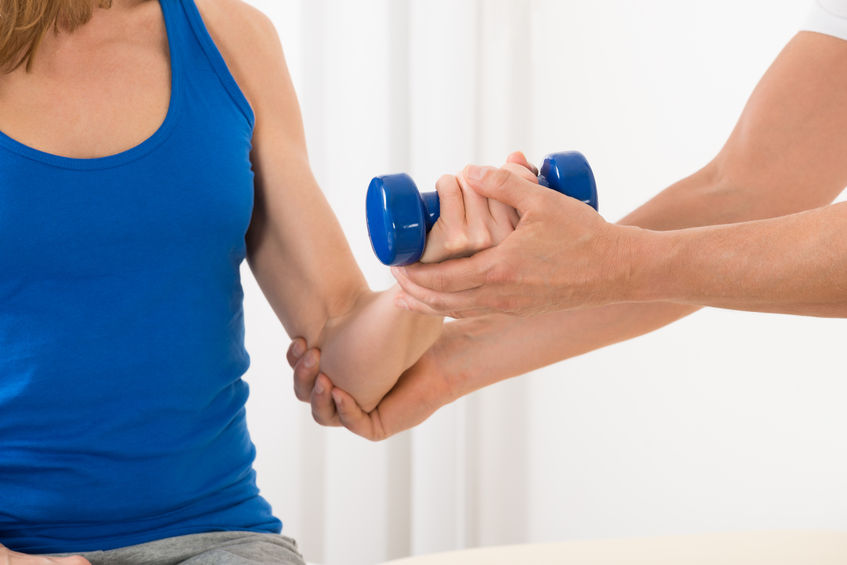
Whether you’re discovering exercise for the first time, a long-time weekend warrior, or a professional athlete, injuries are a pain, in more ways than one. A sure-fire way to derail your training plans, they often end up putting you out of the game for weeks or even months.
While it’s tempting to rush your recovery, going too hard too soon can turn a minor injury into something more serious. To get you back on your feet the right way, we chatted with Ben Bese, Personal Trainer at City Club, to get his top tips on returning to training after an injury.
“During my time as a personal trainer working alongside physiotherapists as well as my time playing VFL football, I have not only helped rehabilitate clients but also rehabilitated myself through some crazy injuries.”
According to Ben, an allied health professional, typically a physiotherapist, should always be your first port of call. While he says an individual’s rehab approach may depend on the severity of the injury, he recommends sticking with the following protocols:
– Seek treatment from an allied health professional
– Construct the best treatment plan with your allied health professional
– Perform all exercises prescribed within your treatment plan
– Continually seek treatment until your allied health professional advises you not to
No matter the injury, the three guidelines Ben follows with his rehab plans are
– Treat
– Mobilise
– Strengthen
“From my experience and after many, many rehabilitation programs, receiving treatment from an allied health professional is always undoubtedly the first initial step you take. Then gaining an understanding of how to re-strengthen and mobilise to ensure you return to a normal joint range of motion is equally as important. Without mobilising and strengthening you will never return to how you were before the injury. This is critical and where personal trainers can help,” says Ben.
“From my experience, how quickly and effectively you return to normal bodily function after an injury depends on the work you put in. Being strict and dedicated to your prescribed rehab program is imperative. If your physio doesn’t prescribe you exercises that will not only successfully rehabilitate your injury but strengthen the surrounding musculature that has been affected and weakened due to the injury, then you need to find another physio.
“Injuries can cause compensation patterns. This is the body’s neuromuscular strategy where your body attempts to make up for the lack of movement in one area by adding a new movement pattern to another non-affected area within the body. This can result in negative implications to the body’s biomechanical integrity and movement quality.”
“It’s always best to keep moving,” says Ben. “No matter what the injury, you can always work around your injury in the gym. Having a personal trainer who has experience in rehabilitation but is also creative in how they train is great, whilst always ensuring your training remains fun and most of all constantly motivating you to keep pursuing your fitness goals.”
If you are looking at getting back into the gym after an injury, you can contact Ben on 0400 588 448 or at sustainedfitnesssolutions@gmail.com
Posted by Peter Hunt in General on April 4th, 2018

The benefits of exercise extend far beyond a slimmer waistline. Slotting regular exercise into your weekly routine results in more energy, a sunnier mood, better sleep, reduced incidence of illness and chronic disease, and a sharper mind. And while a mix of resistance training and cardio is ideal, incidental exercise can also have a big impact.
To get you sitting less and moving more, here are 9 of our favourite easy ways to sneak more exercise into your day. It all adds up and you’ll soon be reaping the rewards – especially if you spend half your waking hours glued to your desk!
Who says meetings have to be in the board room sitting on your backsides? Suggest al fresco walking meetings to your boss, and take your one-on-one reports for a whip around the block for the weekly WIP. Clever companies are also increasingly introducing large standing desks into their meeting rooms and running stand up meetings.
Instead of Netflix and chill, think Netflix and hamstring stretch. TV-time is the perfect time to squeeze in those often-neglected stretches, or get to work with your trusty foam roller or spiky ball. Your tight and tired body will thank you.
Human’s best friend is sure to get you out and about more, as dogs need to be walked twice daily – rain, hail or shine.
Instead of scheduling all social activity around drinking and eating, try and mix things up with some active catch ups. Why not skip the Friday night cocktails in favour of Saturday morning yoga? Swap the arvo movie for a long coastal walk. Or trade trivia night for a game of tennis. Not only will you feel great, you’ll save money.
Have a spare meeting room? Chat to HR about using it for corporate yoga or pilates classes once or twice a week. Exercise is a great bonding exercise and a workout will help reduce staff stress and boost productivity.
If your business is too small for in-house wellbeing programs, try and pop out for the occasional, or frequent, lunchtime workout at the gym or pool. A MUCH healthier option than gobbling your lunch at your desk.
If the last time you saw the office stairwell was during a fire drill, it’s time to get reacquainted. We’re not suggesting you walk up 15 flights of stairs every single time, but if you’re on the first or second floor, do you really need to take the lift?
It’s an oldie, but jumping off the bus a stop or two earlier every morning really is one of the easiest ways to increase your daily steps.
Obviously, you need to respond to your boss’s request and email through that sales report. However, if your co-workers insist on incessantly sending emails back and forth that could be answered in a single conversation, get up and walk across that office. Limit internal emails to the bare minimum and use your legs – and voice – instead.
Posted by Peter Hunt in General on March 26th, 2018

Headaches sure can be a pain in the neck. And, while there are numerous other causes, such as hormones, sinus, or underlying medical issues, the neck/cervical spine can often be the source of your pounding head pain. If this sounds all too familiar, here are 8 Collins Place Physio-approved ways to manage your headaches, without drugs.
Massage can help prevent and reduce the frequency of tension headaches by relieving muscle spasms, releasing shorted muscles, and relaxing tension held in the muscles of the head, shoulders, and neck. When muscle tension eases there is less pressure on the nerves and blood vessels. Oxygen rich blood circulation improves, which also relieves pain.
One of the most useful methods of massage to relieve headaches is Trigger point therapy (TrP). TrP therapy is the application of pressure to a specific point in the muscles. An example would be the muscles extending from the base of the skull, and certain points in the neck and trapezius. When this pressure is applied, it interrupts the nerve signals that are causing the pain, resulting in the muscle releasing to a healthy position.
Stretching the big muscles (upper traps) in the neck and shoulders can also help ease a headache when it comes on. These big muscles all attach to the back of the head and are one of the main causes of tension headaches. Using a spiky ball or your hands to try to release the main trigger points in your traps can also provide good relief when a headache comes on.
Long term, as a preventative measure, strengthening the postural muscles of the neck and back can help to decrease the tension in the neck and reduce the likelihood of recurrent headaches.
Dry needling is another useful tool in the management of headaches. Dry needling involves inserting a needle into a trigger point / muscular knot in a painful or damaged muscle. The aim is to provoke a ‘twitch’ response which will enable the muscle fibres in that area to relax, improving circulation and decreasing inflammation. Dry needling can be very beneficial in the treatment of headaches as it quickly decreases muscle tension in the neck muscles that refer pain into the head.
Posture refers to the position in which the body holds itself most efficiently in sitting / standing / moving. Good posture reduces the stress on ligaments, muscles and joints which can cause headaches. An ergonomic work set up is very important for postural health, as are movement and exercise in general. Remember to take regular breaks from sitting, and incorporate some stretches into your day.
Heat is sometimes recommended for the treatment of headaches, as it can help decrease muscle spasms. A good rule of thumb is to think about whether you feel better or worse after a hot shower. If you feel better after having warm water on your neck, heat may be beneficial in managing your pain.
Headaches can also stem from the jaw. If you are experiencing facial pain, clicking when yawning or chewing, tinnitus, regular headaches or neck pain, TMJ (or jaw) dysfunction may be to blame. Read more about jaw pain management here.
The number one cause of tension headaches? Stress! Keep yours at bay with plenty of regular exercise, and relaxation techniques like mindfulness, meditation, yoga, and massage.
Suffering from headaches? Speak to our friendly team today!
Posted by Peter Hunt in General on March 13th, 2018
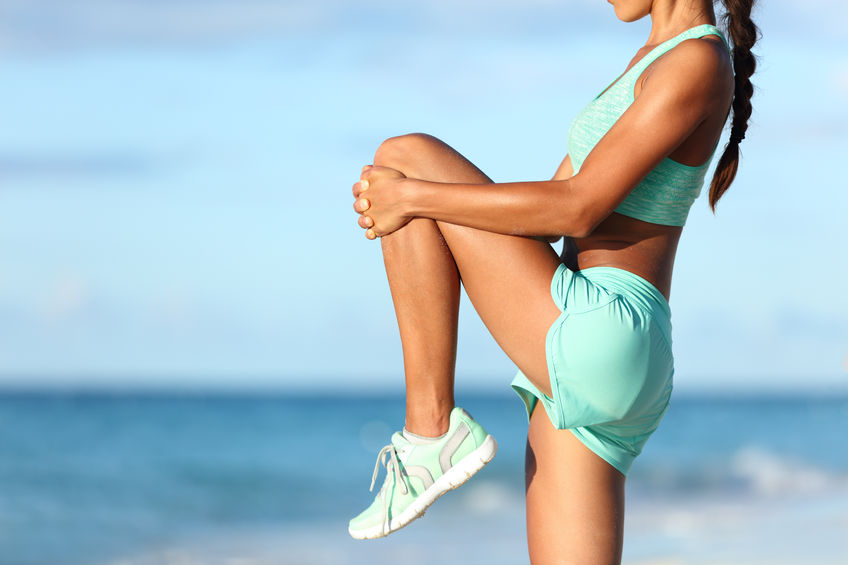
Knee pain is a common complaint, but thankfully, it’s one that can largely be avoided. Taking these five simple steps today will help you enjoy healthy, happy knees for many years to come.
Maintaining a healthy weight is not only important for your cardiovascular and all-round health, it has benefits for your joints, too. Being overweight increases the pressure on your knees when weightbearing and exercising. This puts more compressive load through the joint, causing the cartilage to wear away more quickly and increasing your chances of osteoarthritis.
Food for thought: Studies have shown that for every pound (0.45kg) of weight lost, the load on your knees is decreased by four pounds (1.8kg) when walking.
There are big differences in the way different shoes support your feet for a given sport, and wearing the correct footwear is very important to help in preventing injuries. Running shoes should be light and flexible, allowing the foot to bend and flex through each step. Shoes for high impact sports/exercise that involve a lot of sideways movement with quick changes of direction (basketball, tennis etc) should be a bit heavier and more rigid with good arch support.
The key to maintaining good knee health is keeping good strength and alignment between the hip, knee and ankle. A weakness in your hip stabilisers (gluteus medius) will cause your thigh to rotate inwards, putting increased load on the inside of your knee. Likewise, unstable ankles with cause your shin to rotate inwards and cause you knee to track poorly.
Doing balance exercises and lots of single leg exercises i.e lunges, step ups, single leg bridges, single leg deadlifts etc will help to keep your knees healthy and prevent injury.
The more sedentary you are, the higher the chance of knees concerns now or down the track. Excessive hours spent sitting can cause the muscles in your hips and knees to tighten up and place increased load on your joints. It is very important to do regular stretches before and after exercise to maintain good joint mobility.
Exercise doesn’t have to be fast and furious either – low impact exercise like swimming, walking, cycling, yoga or pilates has significant benefits for your mood and wellbeing, while being gentle on your joints. Move regularly to stay fit and injury free!
It’s important to allow enough recovery time between workouts, as doing a lot of high intensity/high impact exercise can place a lot of extra load on your knees. Mix up your training schedule and do some upper body/yoga etc or have a rest day to allow your muscles to regenerate.
To learn more about how your lifestyle could be causing you knee pain, call Collins Place Physio on (03) 9650 2220 today.
Posted by Peter Hunt in General on February 27th, 2018

Whether you’re a back, front or side sleeper, sleep with one pillow or two, there are a few easy steps you can take to wake up pain free. Here’s how to prevent back pain while you are sleeping, and ensure you’ll always wake up on the right side of bed.
While your preference for a softer or firmer mattress is entirely personal, it’s important to be supported in the heavier parts of your body – ie around the hips and shoulders – so they don’t sink down as you sleep. Your body should remain in a relatively neutral position whether lying on your side or back. You should feel comfortable in bed, and be free of aches and pains when you get up in the morning.
Most beds will feel comfortable in the short time you lie on them in the showroom, so going to a reputable mattress seller like Regal Sleep Solutions can help prevent buyer’s remorse.
As for replacing your mattress? There are no hard and fast rules as to its lifespan, but if you’re waking up with sleep-related pain that only occurs in the morning, it could be a sign your bed needs an overhaul.
Again, pillow choice depends on personal preference, but your neck and shoulder should be in a neutral position whether you’re sleeping on your back or side. If the pillow(s) is too high it will tilt your head forward; if it is too low it will tilt your head upwards. Aim for the neutral middle ground. If you’re experiencing neck pain and headaches every morning, try rejigging your pillow set up.
A pillow or two under the knees can help back sleepers too, while those who sleep on their side can sometimes benefits from a pillow between their legs.
Dehydration can cause cramping and muscle spasms overnight, so don’t forget to keep up your fluids (wine doesn’t count). Exercise – including strengthening and stretching, maintaining a healthy weight, managing stress levels and practising good sleep hygiene will all help you sleep more soundly, and wake up with fewer pains.
Regularly waking up with back pain? Make an appointment with one of our Physios today.
Posted by Peter Hunt in General on February 15th, 2018

If you suffer from shoulder pain, you’re not alone. Rotator cuff tears and tendonitis are common culprits, but there could be a more complex issue at play. When shoulder movement is greatly restricted and simple actions like getting dressed become a daily challenge, it could be a sign you’re suffering from a condition known as Frozen Shoulder.
Frozen Shoulder (Adhesive Capsulitis) is characterised by pain and a loss of movement in the shoulder joint, and is often accompanied by night-time pain that can impair your sleep. The condition occurs when the capsule surrounding the joint becomes inflamed and tightens up, causing pain and limiting your movement.
The initial presentation can mimic other conditions such as rotator tears, calcifying tendonitis and glenohumeral arthritis, but the one defining feature is a marked loss of passive range of motion, especially in rotation.
Frozen shoulder typically has three stages:
The Freezing stage – here pain starts to build up in the shoulder. It can be present at rest and worse with any movement. The range of movement starts to become reduced.
The Frozen stage – the shoulder becomes stiffer on all movements, especially rotating the joint, eg. putting your hand behind your back. The pain starts to reduce but is painful at the end of available motion.
The Thawing stage – there is no pain in the joint and range of movement gradually starts to improve.
Frozen shoulder is estimated to affect up to 5% of the population. Most common in those aged 40 to 60 years, it’s more prevalent in women. Those with diabetes are five times more likely to be affected than the general population.
Although the exact causes of Frozen Shoulder are unknown, people who have had a prolonged period of immobilisation can develop the condition, i.e after a broken arm, rotator cuff injury, post-surgery or stroke. It has also been found that people with certain systemic diseases such as diabetes, cardiovascular disease, tuberculosis, hyperthyroidism, hypothyroidism and Parkinson’s disease are at greater risk of developing frozen shoulder.
If you are facing the prospect of a prolonged period of immobilisation, you should consult your physiotherapist. Range of motion exercises can help maintain good passive range and prevent any capsular tightness and minimise the risk or a Frozen Shoulder.
Treatment in the early stages of the injury is aimed at pain relief. In order to increase the range of motion, massage of the musculature around the shoulder along with gentle range of motion exercises under guidance from your Physio can be effective. If pushed too hard this can be quite painful early on.
The best course of action to speed up recovery if conservative treatment is not working is to have a shoulder hydrodilatation. This procedure, performed by a radiologist, involves saline and some local anaesthetic being injected into the joint. This helps to break up the adhesions and distend the capsule, resulting in increased mobility. Depending on the severity of the frozen shoulder a second or third hydrodilatation may be required to restore full function.
If that does not work, another option is a MUA (Manipulation Under Anaesthetic) where the joint is forcefully extended to its end range motion, stretching the capsule and breaking up the adhesions.
It depends on the individual, but it can take from anywhere from 12 to 24 months to resolve fully. In no treatment is undertaken, full motion may not be recovered. It is quite uncommon, but Frozen Shoulder can recur, especially if the patient has diabetes. In up to 10% of cases it can go on to affect the other shoulder (the condition is typically unilateral).
If you suspect you may have the beginnings of Frozen Shoulder, call Collins Place Physio on (03) 9650 2220 today!
Posted by Peter Hunt in General on January 19th, 2018
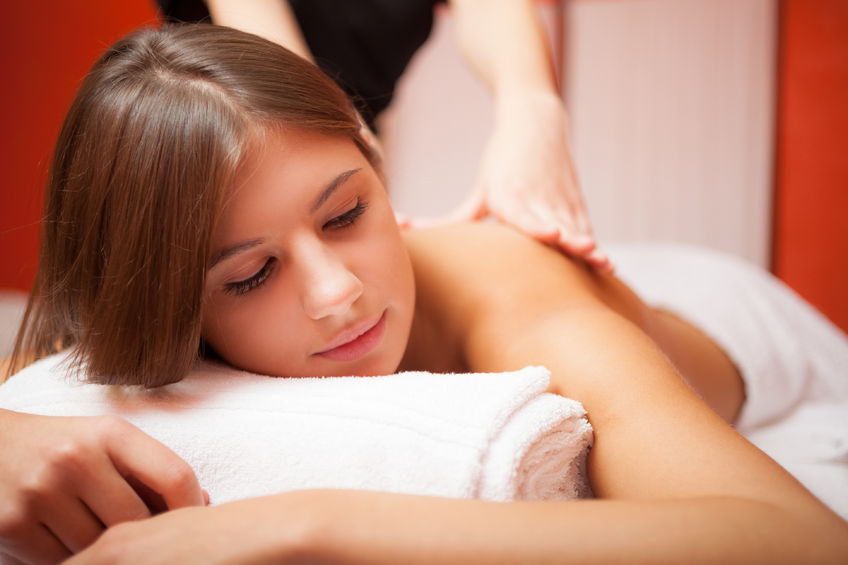
You’ve no doubt heard of remedial, sports and deep tissue massage. But there’s a lesser-known type of massage therapy that has equally as many benefits – lymphatic drainage massage. Technically known as Manual Lymphatic Draining (MLD), this gentle rhythmic massage is used to activate a sluggish lymphatic system, and is beneficial for the management of many health conditions and injuries.
A healthy lymphatic system has numerous benefits, including more effective removal of waste and toxins from the body, stronger immunity, and regulation of fluid and pressure within the body (eg. reduced swelling).
MLD is beneficial for a wide range of people. In fact, over 60 different ailments and conditions can be treated using MLD. These include:
MLD is a very gentle, relaxing treatment. Light, slow rhythmic circular movements using the finger tips are applied to the part of the body being treated, to gently push and stimulate lymph flow. The treatment can be performed with the patient wearing loose-fitting clothes, or via direct contact with skin draped with towels.
Aside from reducing swelling and assisting in detoxification, MLD can boost immunity, reduce headaches, and assist in the management of PMS. And due to its slow, gentle movements, it is incredibly relaxing!
If you suffer from any of the following, please advise your therapist as MLD might not be suitable for you.
Manual Lymphatic Drainage may cause blood pressure to drop, which may result in some light headedness and lethargy. Ensure you drink plenty of water to assist in flushing out toxins and to aid urination. Avoid hot baths and saunas for at least a few hours, and avoid stimulants such as tea, coffee, fizzy drinks and alcohol for 24 hours.
Both of Collins Place Physio’s massage therapists have a special interest in lymphatic draining massage. Call now on 03 9650 2220 to make an appointment with Mariana or Sana today.
Posted by Peter Hunt in General on January 11th, 2018
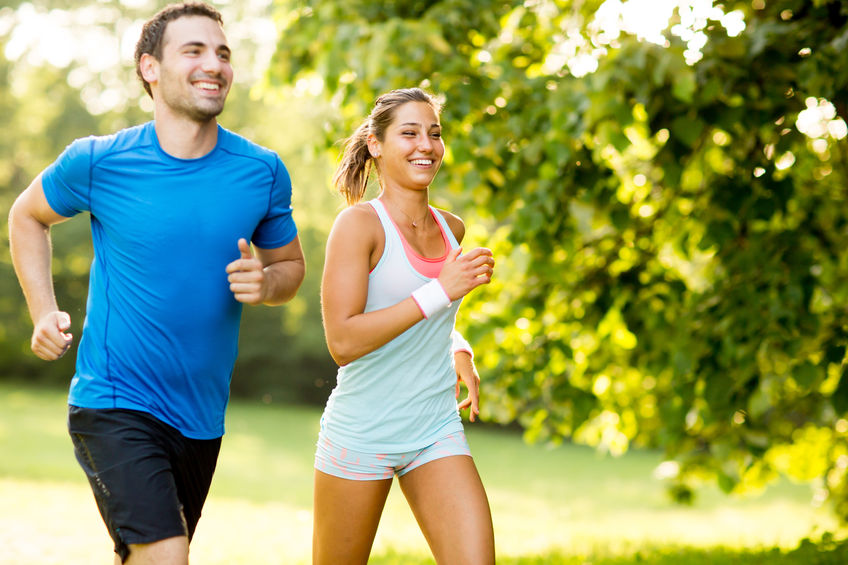
New year, new you! It’s a common refrain come January 1, with many determined to turn over a new leaf and finally get into shape. However, going full throttle when you haven’t exercised in weeks, months or even years, is a sure-fire recipe for pain, injury and throwing in the towel by March.
While we’re all for you crushing your wellness goals this year (!), we want you to do it safely. To help, here are five things you should do before diving into that new year fitness regime, head first.
If you’re fit and healthy, you are probably a-ok to up the frequency and intensity of your workouts. But if you have a pre-existing condition or haven’t shed a drop of workout-related sweat for a while, talk to your doctor before embarking on anything strenuous. Same goes for any major diet changes – it’s always safer to seek advice first.
Whether you’re planning on power walking, getting back into goal attack, or doing Couch to 5K, it really is important to have supportive, well-fitting sports shoes. So, bin anything that you last wore when Tony Abbott was PM, resist the urge to shop online, and head to a specialist sports store.
A proper fitting will help address any issues with your arch and pronation, to prevent your ankle from rolling, and ensure sufficient cushioning and support for the intended activity. Spending a little more on quality shoes now will save you buckets of money on rehab in the long run. And more importantly, save you from pain.
Have you ever signed up for a 12-month gym membership and used it, oh, approximately twice? While busyness or laziness might be to blame, maybe you just aren’t much of a gym bunny. Before committing to a year of yoga or 30-day F45 challenge, maybe try a variety of different class styles and workouts before signing on the dotted line. Apps like Class Pass let you book and try a bunch of different classes at different studios for a monthly fee. Go explore your options.
Want to take your sporting prowess to the next level this year? Make an appointment for a Functional Movement Screen (FMS) and Y Balance test at Collins Place Physio. This thorough biomechanical assessment will identify areas of weakness, asymmetries and inefficient movement patterns. Your physio will then assign you a corrective exercise program to reduce the chance of pain and injury, while helping to enhance your performance. Read more about the FMS & Y Balance here.
Look, there’s really not much point working out like a maniac if you’re filling your tank with total junk. Food is – first and foremost – fuel, so make sure you have plenty of muscle-building protein, complex carbs and fresh veg and fruit on hand. Especially pre- and post-workout.
Other than that, cut back on the white carbs, processed packaged foods, sweets and fizzy drinks and you’ll be doing just fine.
Posted by Peter Hunt in General on December 12th, 2017

Only managed to make it to the gym three times last year? No matter, 2018 has arrived, which means it’s time for a fresh new set of health resolutions! Don’t worry, though – we’re not talking ultra-marathons or the keto diet! Here are seven healthy resolutions that are easy to make, and really not too hard to stick to. Leading to a better, healthier and happy you, in 2018 and beyond!
If you think cardio is enough to keep you in tip top condition, think again. Not only will strength training help you fit into your jeans by promoting lean muscle mass and a faster metabolism, it has real benefits for your posture and mobility. Read all about strength training here.
If you’re one of those people who chains themselves to their desk for a solid eight-odd-hours, you’re not doing yourself ANY favours. You’ve probably heard that “sitting is the new smoking”. It might sound extreme, but it’s not far off. Sitting for extended periods puts a huge amount of strain on the lower back and spine, and it doesn’t burn off that breakfast bagel, either.
So, make a conscious effort to MOVE. Get up from your desk regularly, use your legs rather than email Larry in accounts, go outside for lunch, and suggest a walking meeting every once in a while. As for your desk set up, now’s the time to make sure good ergonomics are at work.
Slinging a heavy bag over your shoulder causes a downward tilt which you’ll usually compensate for by enlisting your neck and shoulder muscles. Leading to strain and pain in the neck, back or shoulders, and sometimes headaches as well.
Avoid overloading the area by carrying the bare necessities. If your handbag’s the size of a small country, resist the temptation to fill it. Swap your hardback for a Kindle, leave your brolly at home on sunny days, and cut back to a single lipstick. Your body will thank you.
Extreme diets are destined to fail, and make you a misery guts, but some simple common sense works a treat. For your overall health, even if not for your waistline, try to eat more whole, unprocessed foods, and cut back on anything refined or pre-packaged. And steer clear of foods whose colour is never seen in nature.
Most of us start off with naturally good posture, evidenced by the ‘S’ curved spine, ease of movement and lack of aches and pains in young kids. However, as we grow up, many of us develop poor postural habits like slouching and jutting our chin forward, which can lead to muscle fatigue and tension, pain and weakness.
Practice makes perfect when it comes to correct posture, but what if you’re not even sure what you’re doing wrong? A thorough postural analysis at Collins Place Physio will give you the tools to see you walking – and sitting – tall in 2018.
Think about how often you say no to others, then think about how often you say no to yourself. No, you don’t have time to go to yoga, you have to finish that report. No, you can’t cook yourself a healthy meal, you have to drive the kids to basketball. No, you can’t read that novel, you have to call your mum back…
Constantly ignoring your own needs is the fast track to ending up in a heap come July. So, make this year the first where you schedule in plenty of self-care activities to keep your motor running. Regular exercise, however gentle, has countless health benefits, as does massage. Not convinced? Here are seven reasons to lay on that treatment table.
A strong core helps improve your balance and stability, and helps prevent injuries and back pain. Try this easy at-home exercise to improve your core stability.
Posted by Peter Hunt in General on November 28th, 2017
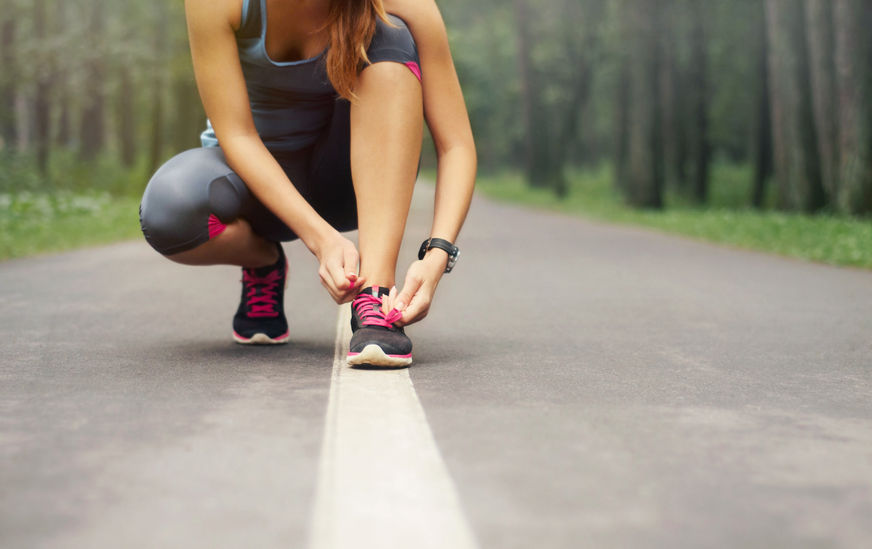
If there’s one complaint runners often share, it’s shin splints. Painful and inconvenient, this common condition can create a serious hurdle in any training schedule. But what exactly are shin splints, and how can they be prevented? Here, Collins Place Physio’s sports enthusiast Conor Brennan shares his insights and expert advice so you can get back in your runners sooner.
Shin Splints (or Medial Tibial Traction Periostitis to give it its medical name) is a colloquial term used to describe pain along the inside edges of the shin bone. A patient with shin splints will complain of diffuse pain along the medial (inside) border of the shin, which usually decreases when warming up. The pain gradually recurs after exercise and is worse the following morning. If left untreated the pain can be unremitting even after warning up, and at its worst can potentially lead to stress fractures of the tibia.
A number of factors may contribute to the increased stress and traction on the muscles on the inside of the tibia. These include:
– poor biomechanics, i.e. over pronation (flat feet), or over supination (raised arches)
– training errors, i.e. when increasing intensity, distance, duration of training too quickly
– poor shoe design or shoes which are not correct for your foot type
– old shoes which no longer offer good support
– training on hard or uneven surfaces
– muscle dysfunction and fatigue
– decreased ankle and foot mobility
Shin Splints do occur more commonly in runners, but they can happen to anyone involved in sports that require a lot of running and jumping. They are also quite prevalent in dancers and the military. At Collins Place Physio, we often sees patients who have recently started a pre-season program which involves an large increase in their running volume.
There are a few ways you can reduce your chances of developing shin splints. These include:
– always wearing good trainers which fit your feet when running/exercising/playing sports
– easing into any running/training program by building up your running/training program by 15-20% each week
– not running on consecutive days when commencing a running program
– consulting your physiotherapist for a running/musculoskeletal assessment and advice on preventative strengthening exercises for running or your specific sport
The first step in the treatment of shin splints is simple: stop running! It is very important to stop running in the short term (2-6 weeks) to stop the main aggravating activity and allow the condition to settle. RICE and anti-inflammatory medications with help ease the inflammation and pain and allow the body a chance to heal.
Can’t live without your workout? Off-leg training such as swimming, cycling, rowing can be done alternatively for cardio training that will not cause the condition to flare up.
A musculoskeletal assessment/running assessment will also help to assess your biomechanics and determine the potential causes of the injury. Changing your running shoes/trainers may be necessary if they don’t provide you with adequate support. Your physio may also recommend orthotics for your shoes.
Your physio will be able to guide you through a lower limb stability program and gait/running re-training to strengthen the area and reduce the risk of recurrence. The pain and symptoms will ease relatively quickly with rest from running/sports. It will take up to 4-6 weeks to build up ankle strength and stability and work on proprioception and the biomechanics. After this a gradual return to running and sports needs to be carefully monitored to build up your strength and endurance.
Keen to get in shape this summer with running? Book a biomechanical assessment with Conor today!
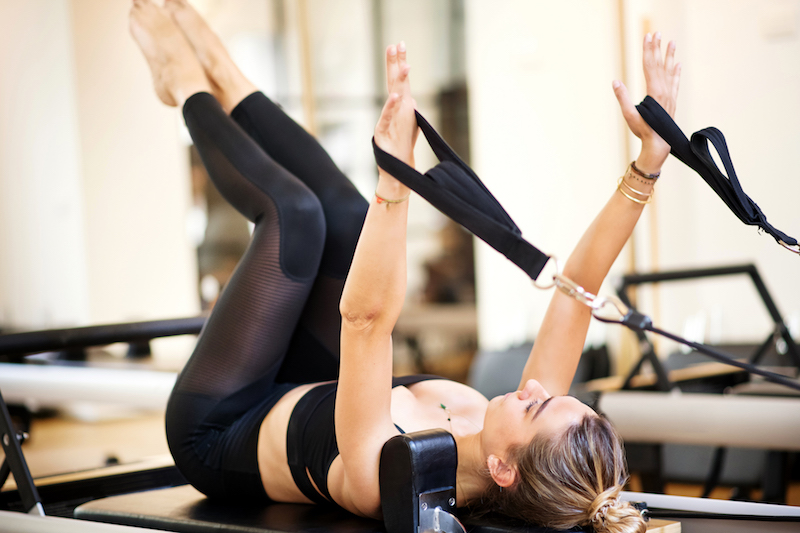
Whether you’re a Pilates devotee or brand new to the practice, you’ll gain a lot from Pilates classes at The Alignment …

If we’ve seemed distracted the past few months, it’s because we’ve been working on a little something that’s actually kind …
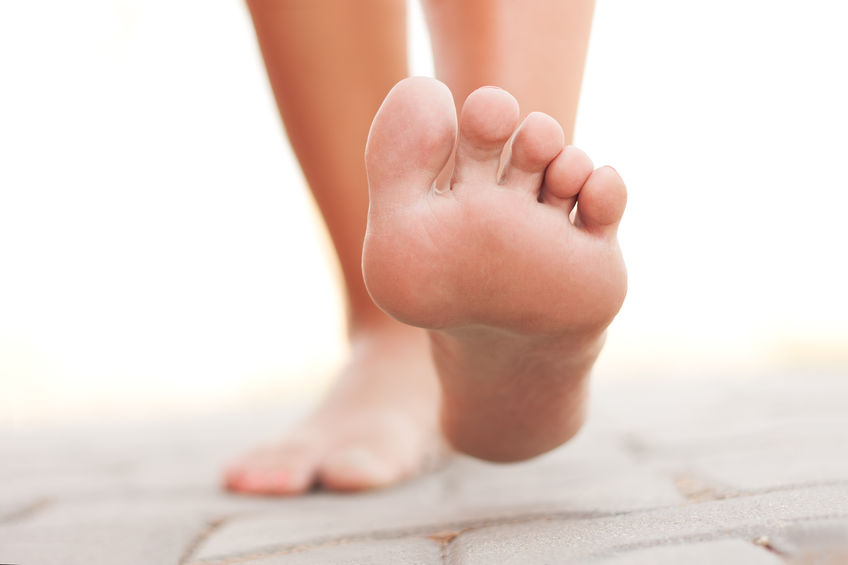
Maintaining healthy, happy feet is extremely important—after all, you’re on them for much of the day! Without foot comfort, your …